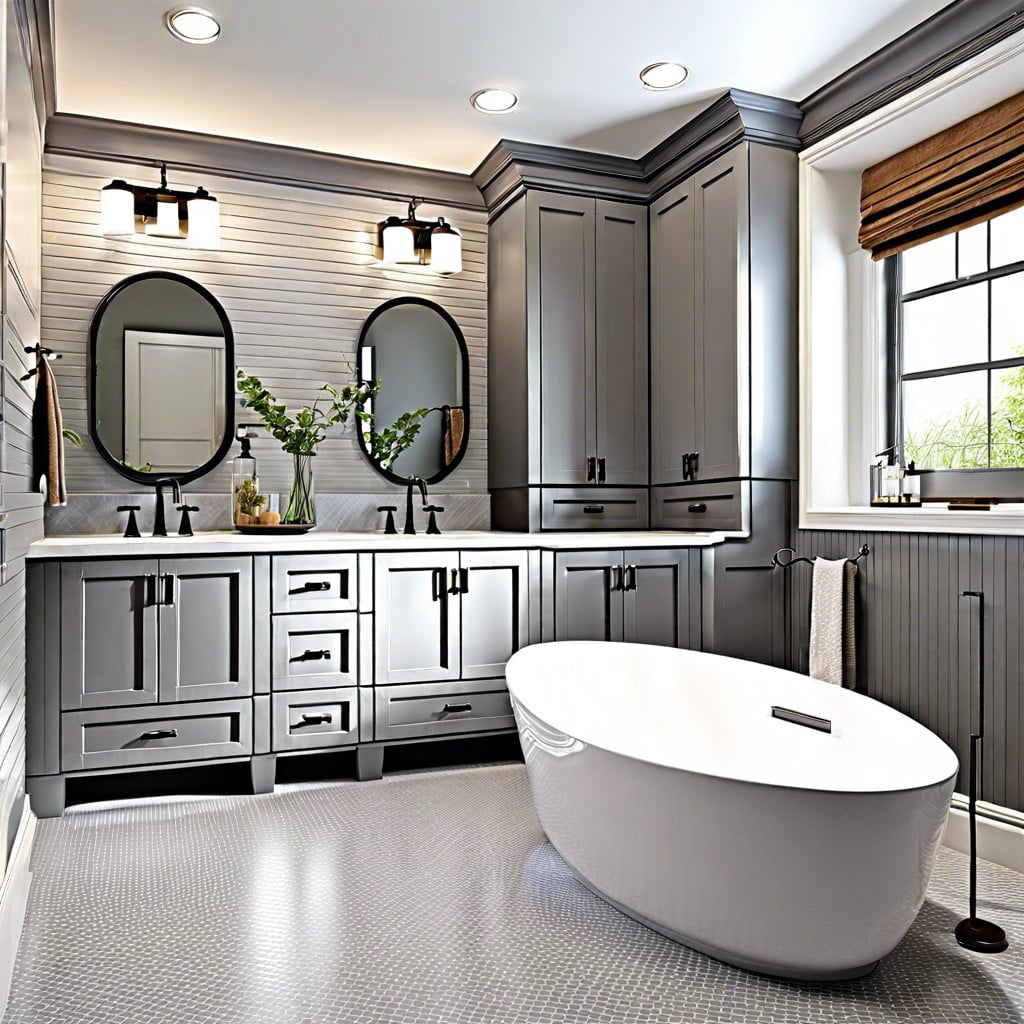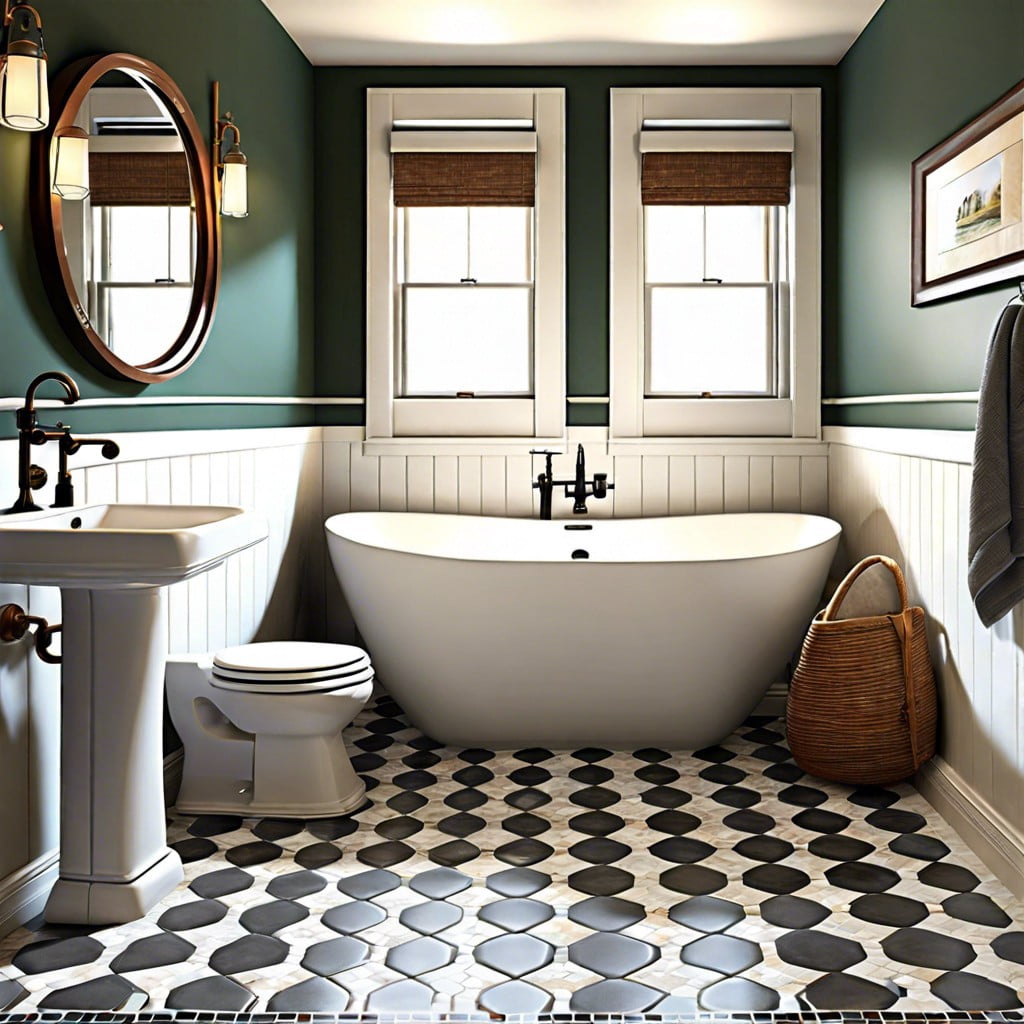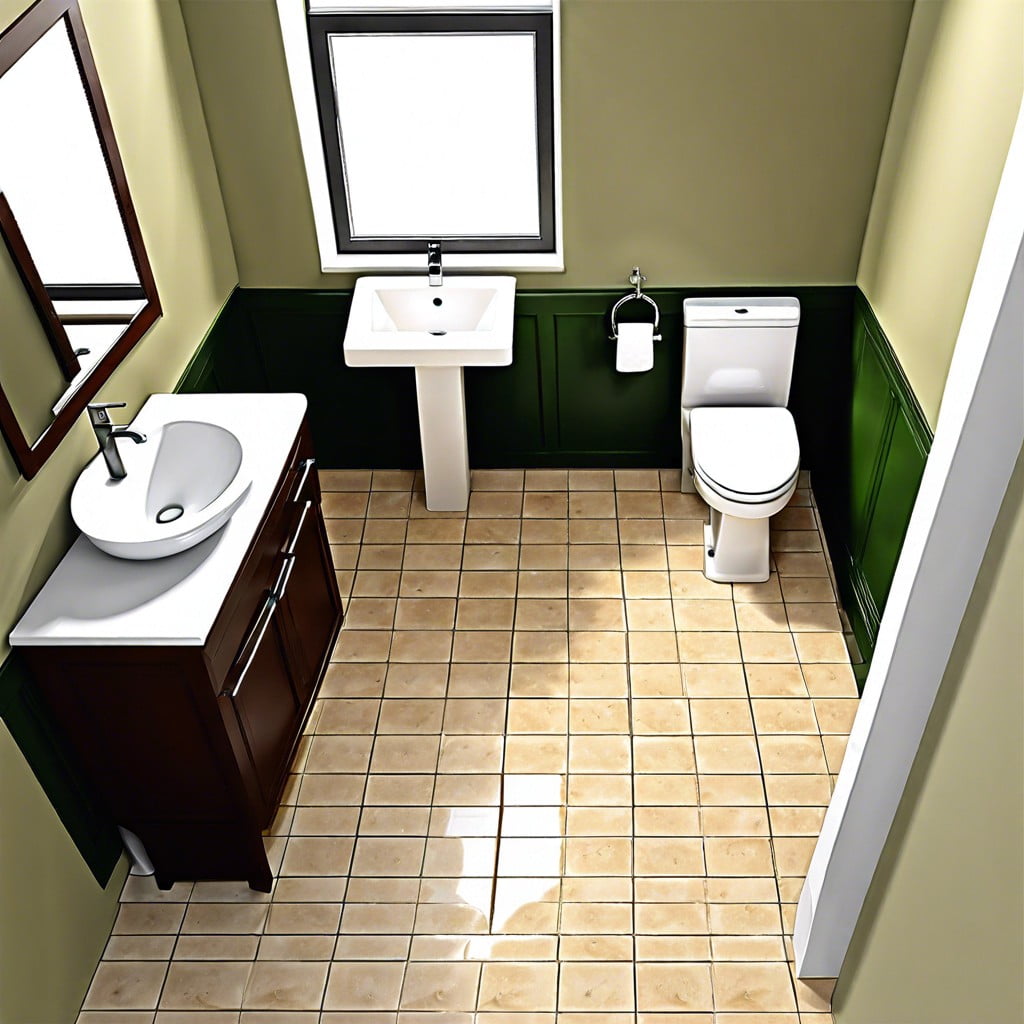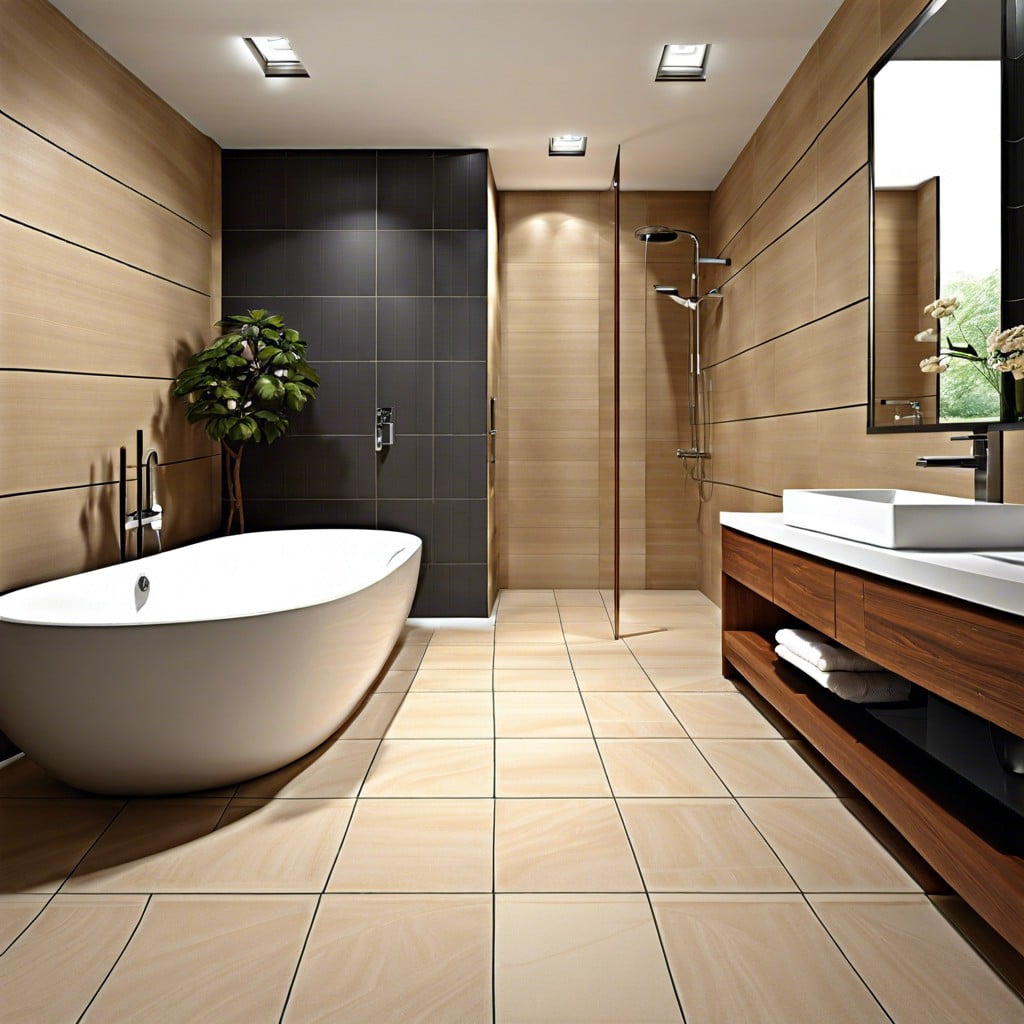Last updated on
In this guide, we’ll unlock the meaning and implications of a 1.5 bathroom in residential real estate, offering you a fresh perspective and deeper understanding of this popular home feature.
Key takeaways:
- A 1.5 bathroom includes a toilet and sink, but not a shower or bathtub.
- Full bathrooms have four main fixtures: toilet, sink, shower, and bathtub.
- Benefits of a half bath include convenience, property value, and design flexibility.
- Cost of building a half bath varies based on plumbing, size, materials, labor, and permits.
- When buying a home, consider the layout and overall value of a half bath.
What Is a Half Bath?
A half bath, also known as a powder room, typically includes just two of the four main bathroom components—a toilet and a sink.
This efficient setup serves the essential needs of guests, allowing for quick refreshment without the requirements of a full bath.
Notably, it lacks the facilities for bathing or showering found in full bathrooms.
Often located on the main floor of a home, its strategic placement is ideal for visitor access, keeping private spaces undisturbed.
The absence of a tub or shower simplifies the design and reduces the spatial footprint, making half baths a smart solution for maximizing both convenience and utility in homes with limited square footage.
Elements of a Full Bathroom
Understanding the components that constitute a full bathroom is essential to grasping the concept of a 1.5 bath scenario. Typically, a full bathroom includes four main fixtures: a toilet, a sink, a shower, and a bathtub. The latter two could be combined in a shower-tub unit, which is often the case in homes looking to save space.
In addition to these fixtures, storage solutions such as cabinets or shelving, as well as adequate lighting and ventilation, are typically integrated. These amenities aim to fulfill the full spectrum of personal hygiene and grooming rituals comfortably and conveniently. It’s the benchmark against which half baths are contrasted and valued.
Benefits of a Half Bath
Adding a half bath to your home is not just a clever utilitarian addition; it’s a strategic move that can boost both functionality and property value. First off, during large gatherings or parties, a half bath serves as a saving grace, preventing guests from trekading through private spaces and ensuring the main bathroom remains unoccupied and cleaner.
Think of the convenience it brings to daily life too. A quick dash to a conveniently located half bath can save time during morning routines, especially in households where the battle for bathroom time is like vying for a front-row seat at a concert.
For those working from home, a half bath can be the difference between a disrupted meeting and the peace of mind that comes with knowing your personal space remains just that—personal.
Moreover, the half bath offers significant returns on investment when selling your home. Potential buyers often see the charm and practicality of an extra bathroom, translating to a competitive edge in the market.
Finally, a half bath can be an expressive space that allows homeowners to play with bold designs without the commitment or expense of a full bath remodel. This small footprint becomes a canvas for creativity and personal style.
In essence, a half bath may be modest in size but is monumental in its contribution to a home’s livability and appeal.
Cost of Building a Half Bath
When considering adding a half bath to your home, it’s important to evaluate the financial investment required. On average, the cost can vary widely depending on several factors such as the quality of materials, local labor rates, and whether plumbing needs to be rerouted or installed.
Here are key points that affect the total expense:
- Existing plumbing: If current plumbing is near the new bathroom’s location, costs can be lower. Conversely, establishing a new water line and drain increases the budget.
- Size and layout: Smaller half baths require less flooring and paint, hence, less spending. Consider optimizing the existing space to control costs.
- Materials: The price spectrum of sinks, toilets, tiles, and lighting is vast. Opting for high-end finishes can double or triple the price.
- Labor: DIY can save money, but professional work guarantees quality and meets code requirements.
- Permits: Don’t forget to factor in the cost of any necessary building permits, which varies by location.
Smart planning and a clear vision can keep costs in check while enhancing your home’s value and utility.
Should You Buy a Home With a Half Bath?
Opting for a home with a half bath presents a compelling case for prospective homeowners. It’s an asset when entertaining guests, ensuring they have access to a separate space without invading your personal bathroom area. Also, consider the potential resale value: a half bath can increase attractiveness to future buyers who value the convenience and functionality of extra bathroom space.
For families, a half bath can ease the morning rush, preventing the bottleneck that often occurs with a single full bathroom. It also means less cleaning; with fewer fixtures, half baths require less maintenance than their full counterparts.
However, assess the layout of the home. A half bath should be strategically located for ease of access but not disrupt the flow or aesthetic of the living space. When purchasing a home, the addition of a half bath shouldn’t overshadow other essential aspects like the condition of the main systems or the overall room count.
In conclusion, while a half bath can be a valuable feature, its worth should be weighed against the complete picture of the home’s offerings and your lifestyle needs.
FAQ
What does it mean by 1.5 bathroom?
A 1.5 bathroom signifies a home containing one full bathroom equipped with a sink, toilet, and bathing unit, coupled with an additional half bathroom featuring at least a toilet, and sometimes a sink too.
What 2.5 bathrooms mean?
The term "2.5 bathrooms" means there are two full bathrooms complete with sink, toilet, and either a tub/shower combo or separate tub and shower, plus a half bathroom that houses only a sink and toilet.
What does 1.75 bath mean?
The term "1.75 bath" refers to a home with one full bathroom (composed of a shower, tub, toilet, and sink) and a ¾ bathroom featuring a shower or tub, a toilet, and a sink.
What is a 1 1 bathroom?
A 1.1 bathroom refers to a setup in a house where there’s one full bathroom that includes a tub, toilet, and sink, and a half-bathroom with only a toilet and sink.
How do real estate listings define a .5 bathroom?
A .5 bathroom in real estate listings typically refers to a bathroom with a sink and a toilet, but without a bathtub or a shower.
What differentiates a full bathroom from a .75 one?
A full bathroom includes a toilet, sink, shower, and bathtub, while a .75 bathroom has the same amenities excluding the bathtub.
What practicality does a 1.1 bathroom design offer in a household setting?
A 1.1 bathroom design offers practicality in a household setting by providing an extra half-bathroom for guest use, thus creating less disruption in the master bathroom.
Recap




